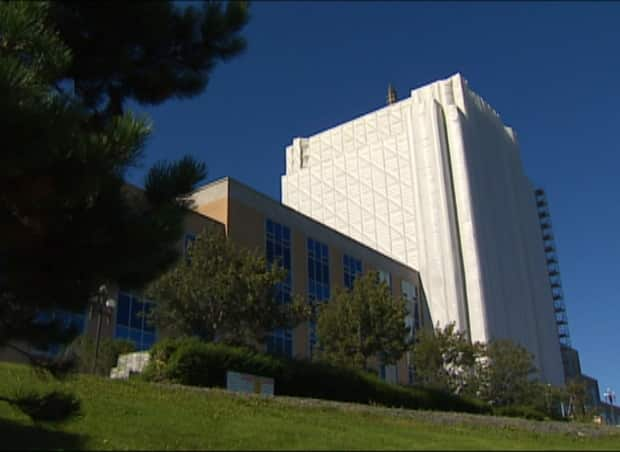As metaphors go, a leaky Confederation Building is so on target for right now


We tend to forget how long it took, but Confederation Building in St. John's was under tarps for month on month — years, actually — to fix a problem that, it turns out, still needs fixing.
They said repairing the walls of Confederation Building would take three years.
It took six.
The budget? The government said it would cost $20 million.
The bill came to $56 million.
We were told all that money would at least be well spent: we could count on six decades of stability.
It's been six years, not decades.
As CBC Investigates producer Rob Antle documented in a story earlier this week, the extensive work that was conducted between 2009 and 2015 has resulted in a situation where leaks are still common in Confederation Building, which is home to key offices of the Newfoundland and Labrador government (Premier Andrew Furey has a view of St. John's from the eighth floor) as well as the House of Assembly.
It's not just that the leaks are common again, too; they're pervasive.
"Since completion, water penetration has occurred on all elevations of the building," says a 2020 briefing note that Antle obtained through access-to-information legislation. That means every side has a problem, although the note adds that "south and east elevations [are] reportedly most affected due to the predominant wind direction."
WATCH | Rob Antle uncovers documents that show Confederation Building is once again leaking:
Confederation Building is, after all, exposed to the elements, sitting as it does on a bluff that overlooks the city. Bearing the brunt of the wind and the rain is the cost of the magnificent view, which was picked when Joseph R. Smallwood was in his prime. The name of the building — and the renamed Confederation Hill, on which it rests — was picked as a nod to Smallwood's boast of his greatest achievement.
Costs woefully underestimated
Taxpayers are now exposed, too. Granted, a building that was completed in 1960 will obviously need maintenance, but Confederation Building's problems seem appropriate to our current times.
As metaphors go, it's bang on trend for where things are right now.
Think about it. It's like Muskrat Falls, but on a smaller scale. Unlike Muskrat Falls, it's easier for more people to see, given Confederation Building's conspicuous place in the province's capital.

Like Muskrat Falls, the renovation plan was developed in the Danny Williams era, and then executed largely after Williams retired from politics to pursue his own interests in the private sector. At the time of the decision, the government was getting used to hundreds of millions of dollars in surplus cash.
Like building Muskrat Falls, fixing Confederation Building had a budget that proved to be woefully underestimated. When it was sanctioned in 2012 by Kathy Dunderdale's government, the Muskrat budget was pegged at $7.7 billion. The project has lasted for years longer than expected, and the budget has soared to more than $13 billion, and counting, with new bills still arriving.
And like Muskrat Falls, we're still dealing with a lack of performance. Power from Muskrat Falls is still not flowing in full.
As for Confederation Building, it's not clear yet what's in store. The government has refused interviews, and has only acknowledged that the status of a briefing note from last December is still relevant.
It's of course worth noting that the long-running makeover of Confederation Building cast the whole structure in just the same shade of deep blue that the Progressive Conservatives use in political campaigns.
It's doubtful that the metaphorical reminder we now see — a repair project that went over budget and did not succeed — is what former cabinet ministers had in mind when that decision was made.
Revisiting other decisions
The dampened walls of Confederation Building are a reminder of how dramatically things can change. In the 2010 budget, in the early months of that renovation, the Tories decided to cut income taxes, while opting to run a budget deficit on the heels of surpluses so significant that the net debt had earlier been reduced by about $4 billion, to just under $8 billion.
At the time, Marshall had no apologies for deficit financing, reducing tax income and not touching government spending.
"This is not a time to slam on the brakes," Marshall told reporters that day. "It's about momentum; it's about keeping the momentum going."
Speaking recently with CBC reporter Terry Roberts, Marshall said he regrets some of the decisions of those heady years.
"I take responsibility for what I did while I was finance minister as part of the government, as does the entire cabinet," Marshall said in an interview earlier this month.
We don't know yet what's going to happen to Confederation Building, or how more repairs will happen. (The warranty on the new windows has already expired.)
In Monday's budget, though, it will be interesting to see if Finance Minister Siobhan Coady addresses some of the other, bigger decisions — tax cuts come to mind — made in an era that set Newfoundland and Labrador on a course that it cannot afford.

